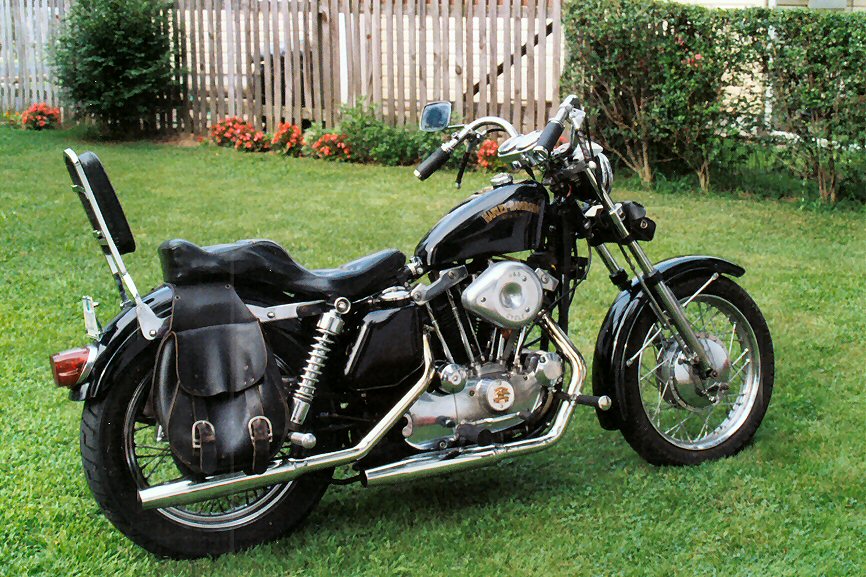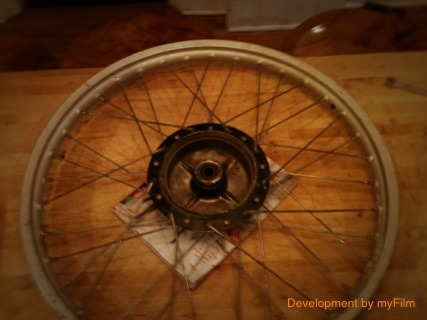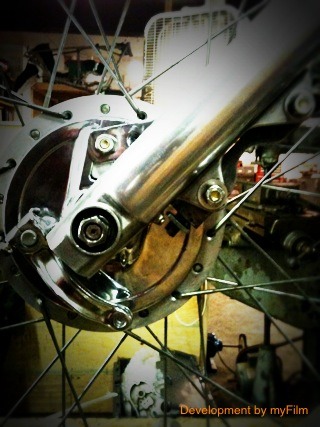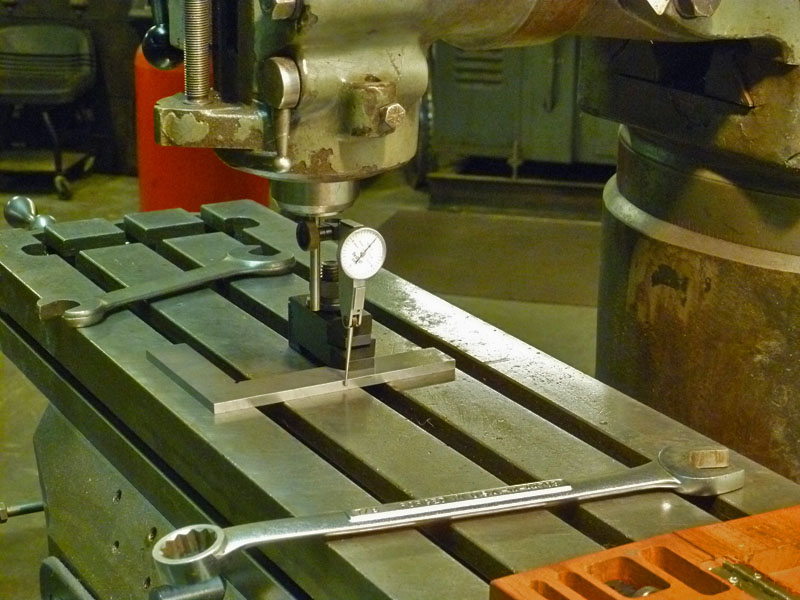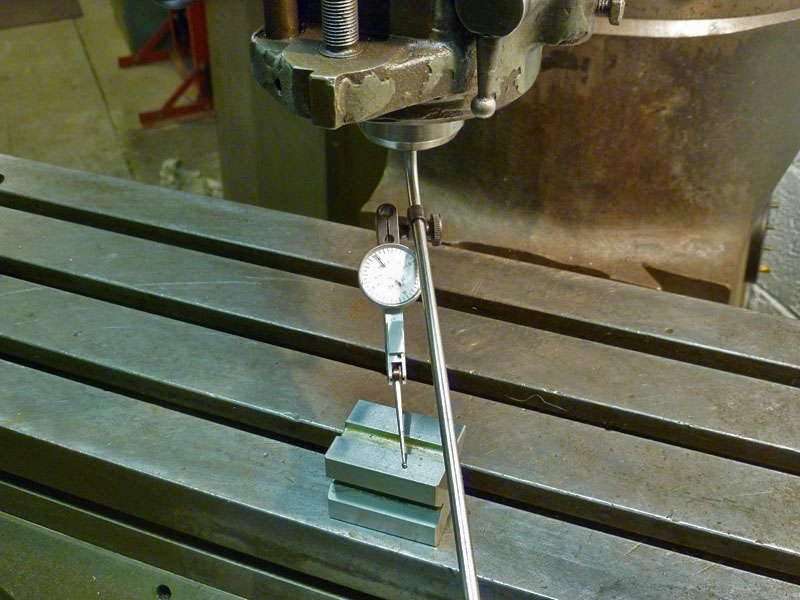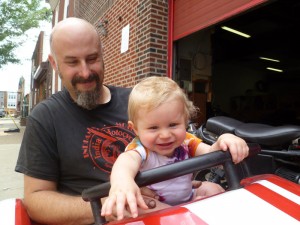Monthly Archives: October 2011
They Stopped Making These . . .
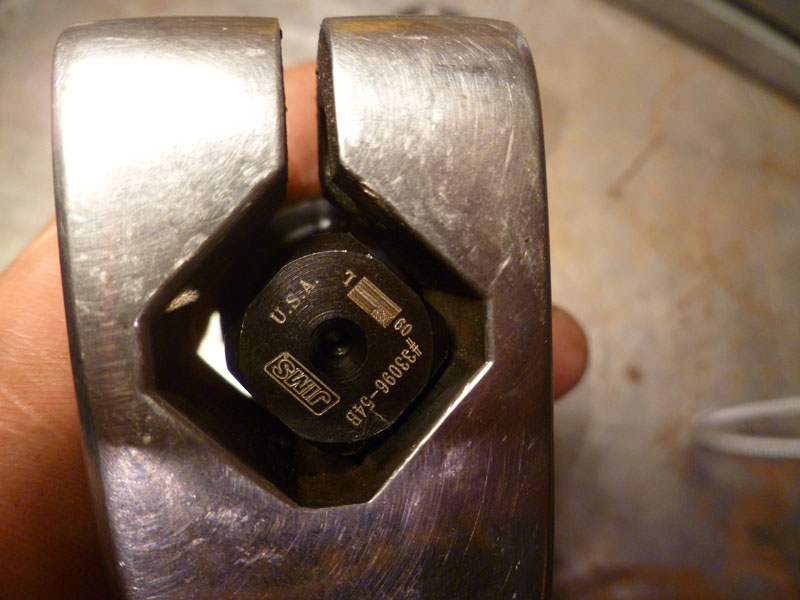
Hmmmm. How to make this part fit that part. . . I don’t think smashing it closed and bolting it down will do.
So as I’m leaving to go for a ride a couple weeks ago the kicker on the red & black pan gets stuck in the bottom position and no longer turns the motor. There were no noises or other indications that the shaft had broken, but it did. A number of years ago I fixed this shaft when the threaded boss for the internal gear sheared off. That one was my fault. Sometimes I’m still a gorillla-fist and tighten things too much. I machined off the end and tapped it for a retainer screw and made a thick retainer washer. This fix lasted about five years. Not bad.
At that time I was too stubborn to buy a new shaft as I thought they were too expensive at almost a $100. Well, now you can’t get one at all for any price. I searched pretty thoroughly. Seems they stopped making them. The shaft for this particular kicker has an oversized boss where the arm attaches for increased strength. The arm has an extended length compared to stock, too. The attachment point on this one measures at .788″ where a stock one is closer to .600″. That’s a big difference to cover by fashioning some kind of shims but I imagine it could be done.
I ordered a replacement shaft of stock dimension from the local shop (Riverside Cycles in Phila) and figured I’d come up with an idea for how to make it work shortly. It came to me later that day: Cut the old shaft in two, keeping the oversize arm attachment portion. Cut a perfectly good brand new shaft in two, keeping the internal gear and shaft portion. Weld them together. What makes this job tricky is that the shaft material is extremely hard, tempered and precision ground. You can’t weld at the shaft as you’d have no way to grind it back down to original dims. It’d also probably be weak. I decided to cut them off just behind the arm attachment point, taper them down to a “V” shape to allow deep welds and then clean up the welds back to original size.
Guess there’s no way you can claim to know how to weld if you don’t trust your own work. This application will be good test. You can imagine that there are major forces exerted at the repair point including flex and torsion. I don’t claim to be a welder but I have welded a ton of parts for my bikes and a few others’ that have held up just fine. I know the machine I have very well and can generally be confident in my work. I also have fucked up a bunch of stuff. . . and like to think I learned from it. We’ll see with this one.
I was pleased with how this came out in that at least it looks decent enough. I’ll see if it holds in real life. This kicker is used to start a 93ci shovel/panhead motor with 9:1 compression. Not huge, but no 350 Honda either. I’ll keep you posted.
Let’s get to it. Pics and steps after the jump . . .
PHOTO ESSAY: fitting a 23″ wheel to a late sportster front end
This serves to test out posting through an outside source AND how I fitted a 23″ xr500 wheel to late sportster forks

Cutting the axle to fit the new bearings
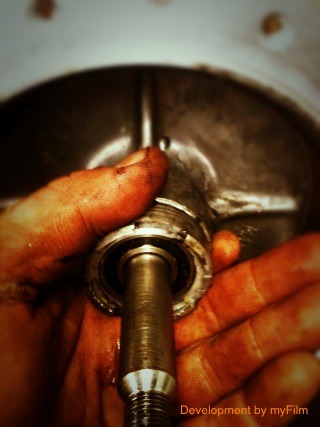
Oversized bearings from mcmaster installed and axle fitted
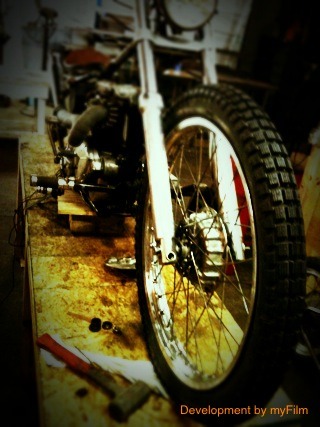
Relaced and trued to less than .020 out of round. Rim polished on the buffer
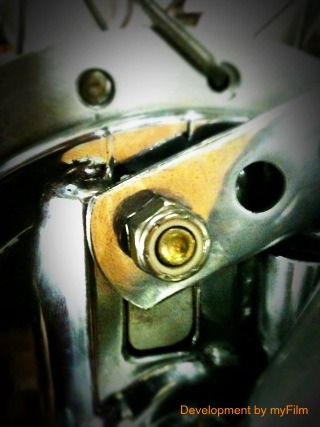
Brake backing plate all polished up with brackets to adapt to late forks and built in cable adjuster
Tuesday Shop Night
Shop night last night, like most Tuesdays. Don’t know how we picked that one, but it’s been working so why mess with it. The excitement and building momentum at the shop is in the air and we can all feel it. With the cold air comes a renewed interest in spending time building new projects and fixing the place up. Without formal planning of any sort, there were six people last night working on bikes. Perfect.
I got the milling machine variable speed conversion done last weekend and was ready to square up the head. I’ve not used this machine in two or three years and have moved it twice in that time. Young Dan and I and set about getting it trued up so we could cut something.
First we indicated a precision square on the table parallel with the Y axis and locked it down. We then traveled the head and made sure it was parallel to the reference square. Close enough.
Next we rigged up bent piece of round stock to check the nod and tilt. Took us about a half hour or so as I’m a little rusty and this machine was WAY out. After messing with it a while I remembered to set it up by eye first with the precision square then use the indicator for fine tuning. Done. +- .0005 all the way around. Lock it down and leave it. Everyone instructed to never move the head. That’s why we have a big adjustable angle plate (that weighs fifty pounds!).
“Hey Dan, wanna cut something?”
Because I Can
not fake
Dan y Casey,
Este sitio es el programa de instalación y de las obras. En la realidad.
Jason

